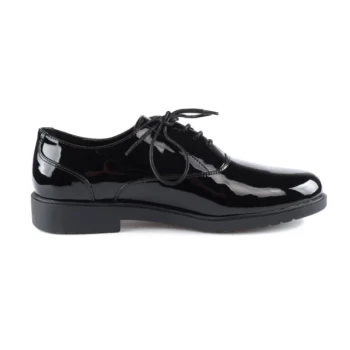Waterproof shoes utilize a combination of specialized materials and construction techniques to prevent water from entering while maintaining breathability. The key components include a waterproof membrane with microscopic pores, sealed seams, and durable water-repellent exterior treatments. These elements work together to block liquid water from penetrating the shoe while allowing moisture vapor from sweat to escape, ensuring comfort and dryness for the wearer.
Key Points Explained:
-
Waterproof Membrane Technology
- The core of waterproof footwear is a thin membrane (often made of materials like Gore-Tex or similar proprietary fabrics) with microscopic pores.
- These pores are small enough to block water droplets (which are larger in liquid form) but large enough to allow moisture vapor (from sweat) to pass through, ensuring breathability.
- This membrane is typically laminated between the shoe's outer material and inner lining to create a barrier against external water.
-
Seam Sealing
- Stitched seams are potential entry points for water, so waterproof shoes use techniques like:
- Taped seams: Seams are covered with a waterproof tape to seal any gaps.
- Welded or bonded seams: Some high-end waterproof boots use heat-welded seams instead of stitching to eliminate needle holes entirely.
- This ensures no water can seep through the stitching or construction gaps.
- Stitched seams are potential entry points for water, so waterproof shoes use techniques like:
-
Durable Water-Repellent (DWR) Treatment
- The exterior fabric is treated with a DWR coating, which causes water to bead up and roll off the surface rather than soaking in.
- Over time, this coating can wear off but can often be reapplied to maintain performance.
- The DWR treatment works in tandem with the membrane to prevent the outer layer from becoming saturated, which could compromise breathability.
-
Multi-Layer Construction
- Many waterproof shoes use a three-layer system:
- Lining: Wicks moisture away from the foot to the membrane.
- Midlayer (Foam): Provides cushioning and insulation.
- Waterproof Bootie: A barrier layer (often made of polyurethane or similar material) that blocks water while allowing vapor to pass.
- Some designs include a protective outer layer (like tricot fabric) to shield the bootie from abrasion and enhance durability.
- Many waterproof shoes use a three-layer system:
-
Additional Design Features
- Gusseted Tongues: Prevent water from entering through the lacing area.
- High Collars or Ankle Seals: Found in waterproof boots to block water from splashing over the top.
- Waterproof Insoles: Some models include moisture-resistant footbeds for added protection.
Have you considered how these technologies balance waterproofing with breathability? The science behind these designs ensures your feet stay dry not just from rain but also from sweat, making them ideal for active use in wet conditions.
Summary Table:
| Component | Function |
|---|---|
| Waterproof Membrane | Blocks liquid water but allows moisture vapor (sweat) to escape. |
| Seam Sealing | Taped or welded seams prevent water from seeping through stitching. |
| DWR Treatment | Causes water to bead and roll off the exterior fabric. |
| Multi-Layer Construction | Combines lining, midlayer, and waterproof bootie for protection & comfort. |
| Design Features | Gusseted tongues, high collars, and waterproof insoles enhance performance. |
Keep Your Feet Dry with Professional-Grade Waterproof Footwear!
As a leading manufacturer of high-performance footwear, 3515 specializes in waterproof shoes and boots designed for durability, comfort, and all-weather protection. Whether you're a distributor, brand owner, or bulk buyer, our advanced construction techniques—like breathable membranes, sealed seams, and DWR coatings—ensure superior waterproofing without sacrificing comfort.
Why Choose 3515?
- Custom Solutions: Tailored designs for hiking, work boots, or urban wear.
- Bulk Production: Scalable manufacturing for large orders.
- Quality Assurance: Rigorous testing for waterproofing and breathability.
Ready to elevate your footwear line? Contact us today to discuss your needs!
Related Products
- Customizable Slip-On Safety Shoes Direct from the Factory for Wholesale
- Athletic Safety Shoes with Dial Closure & Steel Toe for Wholesale & Custom Manufacturing
- Durable Canvas Work Shoes with Rubber Lug Sole | Wholesale Manufacturer
- Puncture-Resistant Velcro Safety Boots for Wholesale & Custom Manufacturing
- Wholesale Anti-Smash & Puncture-Proof Safety Shoes Custom Manufacturing for Brands
People Also Ask
- Are quality shoes a good financial investment? Long-Term Savings & Comfort Explained
- Why is traction important in work boots, and what sole features enhance it?
- How should women's work boots be cared for and maintained? Essential Tips for Longevity
- Is it normal to wear shoes in the house? Cultural Norms & Hygiene Explained
- How does wearing the right shoes benefit overall health? Boost Mobility and Prevent Chronic Pain


















